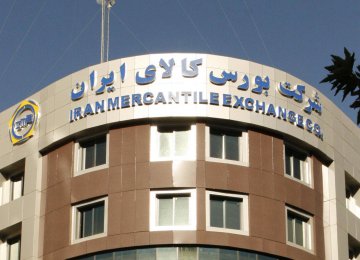Iran Mercantile Exchange’s export trading board is all set to resume cement trading, the head of Cement Employers Association said.
Abdolreza Sheikhan added that the precise date will be announced by Iran Trade Promotion Organization.
Sheikhan broke the news of cement trade resumption at IME back in November, saying it would begin in the fourth quarter of the current fiscal year (Dec. 21-March 20), SENA reported.
According to the official, by delegating cement trade to IME, the association seeks to curb unhealthy competition among producers, which has disrupted the market balance and led to sticky low prices.
“By entering IME, we expect to witness competitive and stabilized prices, achieve trade transparency and reestablish foreign traders’ trust in the quality of Iranian cement,” he said.
Founded in 2006, Iran Mercantile Exchange is a commodities exchange located in Tehran. It trades agricultural, industrial and petrochemical products in the spot and futures markets.
The cement industry has been dealing with low demand and the consequent liquidity issues for the past few years due to stagnation in the construction sector. The shrinking market gave rise to what the association calls unhealthy competition, meaning the producers entered a race to offer the lowest prices by any means possible, even at the expense of sacrificing the quality of their products.
In early 2015, the Iraqi government banned the import of Iranian cement citing low quality, which deprived Iranian producers of their most lucrative market.
Cement producers have been on a hunt for alternative export markets ever since. They recently entered the markets of Tanzania, Egypt and Haiti.
In the meantime, the association has called on IME to train cement industry players on the dynamics of the commodity exchange.
“The cement industry has been going through a rough patch in recent years and we need to have a smooth entry into IME so that the market balance is not disturbed,” Sheikhan said.
The association announced two months ago that it is in talks with IME to resume cement offerings in the commodity exchange’s domestic trading board.
However, Sheikhan believes that it is still too early, as the domestic market glut should first be balanced by boosting exports.
Cement was last offered on IME’s main trading board from December 22, 2010, to March 20, 2012. During the period, demand and sales never exceeded their June 2011 highs of 200,000 and 170,000 tons respectively.
By 2012, both demand and sales came to a near-complete halt.
Iranian cement plants’ 80-million-ton annual manufacturing capacity exceeds domestic demand by more than 30 million tons, according to data released by the Planning and Budget Organization. This is while the Ministry of Industries, Mining and Trade has set the target of 60% growth for domestic cement output over the next decade to reach 120 million tons. Exports are also envisioned to rise 68% to reach 32 million tons.
More than 15 million tons of cement and clinker (the main material used in cement production) were exported in the last Iranian year that ended in March 2016, with Iraq accounting for close to 65% of the figure.
Production has also been on a downward trend as the 2015 output reached 58.6 million tons, down 12% from the previous year, according to the association’s data.
The plummeting production led to a fall in Iran’s global ranking, as the country stood three steps lower in 2015 from the previous year’s fourth position among the world’ top cement producers.






Add new comment
Read our comment policy before posting your viewpoints